HOW TO DETERMINE YOUR SKIN TYPE

HOW TO DETERMINE YOUR SKIN TYPE
Your skin type will tell you which products might suit you best. Whether you have dry, oily, normal or combination skin - with the right routine, you can take optimum care of your skin.
Are you looking for a minimalist skincare routine? Then the Core Collection is right for you. Go directly to the store here:
Your skin is as individual as you are - and it changes over time. You may have noticed that your skin has changed over the years. How can you adapt your skincare routine and optimize it? It's worth taking a look at the different skin types. In cosmetics, a basic distinction is made between four skin types: normal skin, dry skin, oily skin and combination skin. The right skincare routine starts with knowing your own skin type. In this article, you will learn all about skin type determination and facial care.
WHAT SKIN TYPE DO I HAVE?
Determining your skin type is not complicated: A quick wash test can help you assess your skin:
- Cleanse your skin with a mild cleanser such as The Ten Out Of Ten Gentle Gel Cleanser.
- Dry them with a clean towel.
- Wait 30 minutes and observe your skin.
- Is it tight or does it feel rough? Then you probably have dry skin.
- Is your face shiny? This indicates oily skin.
- Is only your T-zone (forehead, nose, chin) shiny, while your cheeks tend to be dry - or vice versa? Then you have combination skin.
- Don't you see any particular abnormalities? Then you have normal skin.
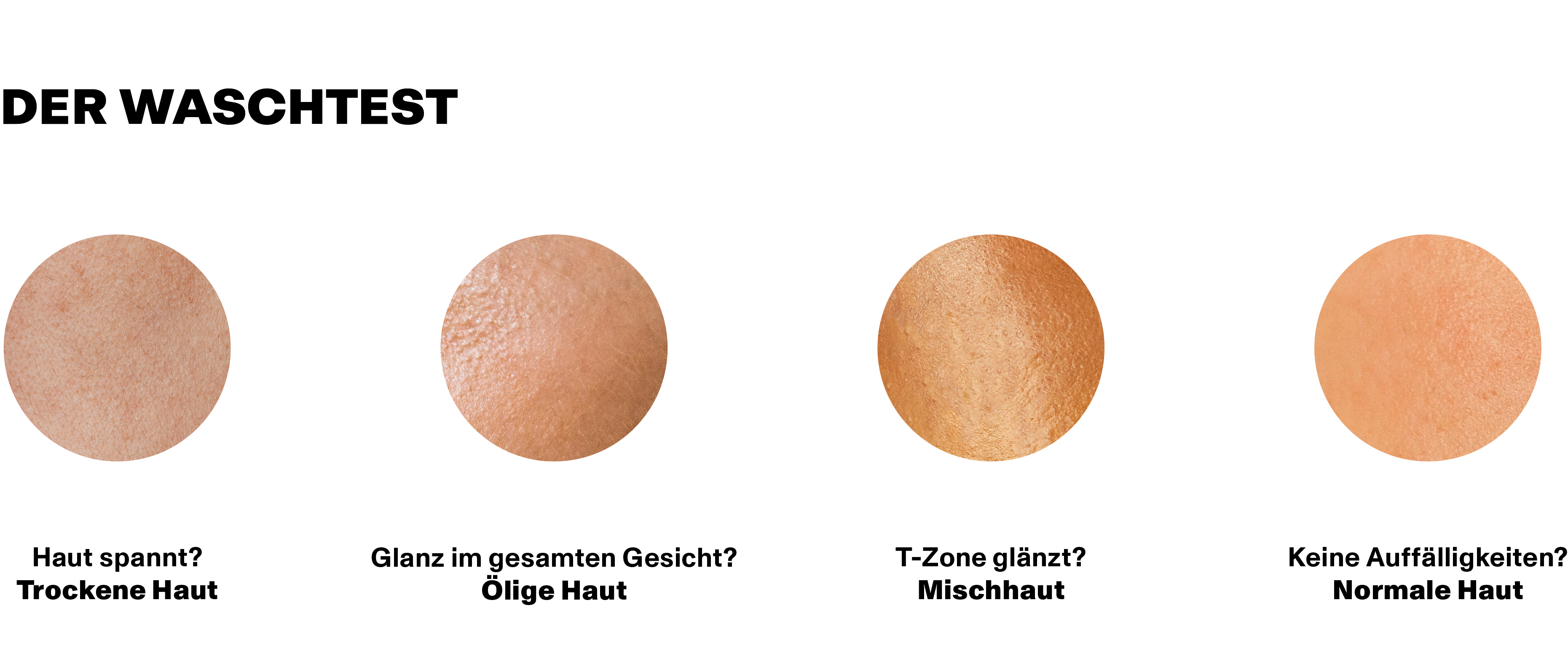
Alternatively, you can also use the blotting paper test to determine your skin type - this will tell you exactly how oily your skin is. Press a blotting paper onto different areas of your face, for example in the morning before cleansing or around 30 to 60 minutes after you have carried out the wash test. You can read the result as follows:
- Little to no oil remains on the paper? Then you probably have dry skin.
- Are there clearly greasy residues on the paper? This indicates oily skin.
- Does oil show up on the paper, especially in the areas used to dab the T-zone, while the cheeks remain rather dry? Then you have combination skin.
- Does the paper only absorb a little oil? Then you have normal skin.
Below you will find information on the four different skin types and the appropriate skincare for each. You can use this as a guide, depending on which characteristics you have identified in your skin type test.
THE 4 SKIN TYPES IN DETAIL
1. normal skin
Normal skin is characterized by a balanced ratio of sebum and moisture production. It shows hardly any irritation, is resistant to environmental influences and is rarely prone to impurities or feelings of tightness. People with this skin type have fine pores, an even complexion and a natural glow.
How to care for normal skin: The aim is to maintain healthy skin and prevent premature ageing. This is the aim of anti-ageing - at DR. EMI ARPA SKIN we prefer Well-Aging. The aim is to strengthen the skin barrier and support skin regeneration - in particular to prevent oxidative stress, loss of elasticity and the first wrinkles. UV radiation is considered to be the main cause of extrinsic skin ageing as it damages the collagen structure of the skin and promotes free radicals. Environmental pollutants (e.g. particulate matter) can also cause oxidative stress and thus also contribute to premature skin ageing. It is therefore worth using SPF and antioxidants at any age and for any skin type.
For example, use a moisturizer with ingredients such as ectoine, ceramides or antioxidants such as vitamin C or superoxide dismutase (SOD) - these protect against environmental damage. Daily UV protection is also essential.
Even if your skin is in balance, pay attention to changes caused by the seasons, stress or hormonal fluctuations. Normal skin can, for example, temporarily feel dry or sensitive and then needs adapted care.
What you should avoid: Normal skin should not be over-cared for with too many active ingredients. Also avoid very rich formulations or excessive or abrasive exfoliation (this means that the skin is mechanically exfoliated - i.e. by rubbing particles). This can damage the skin barrier.
YOUR ROUTINE FOR NORMAL SKIN:
2. dry skin
You can recognize dry skin by various typical signs, including a feeling of tightness, fine flaking and in some cases redness or irritation, especially in cold weather or after washing. Dry skin is characterized by reduced lipid and/or moisture production - often accompanied by a weakened skin barrier. It can either be low in lipids (sebostatic) or low in moisture (dehydrated) - or both at the same time.
How to care for dry skin: The focus here is on intensive moisturization - a combination of occlusion, lipid supply and barrier protection is crucial. Ceramides (especially NP, EOP, AP), squalane, cholesterol and phytosphingosine help to specifically supply the skin's intercellular lipid matrix. Panthenol has an additional calming effect and supports regeneration. Moisturizers such as beta-glucan, glycerin, urea or ectoine help to bind water in the skin and improve hydration in the long term. A mild cleanser with a skin-neutral pH value cleanses the skin without drying it out.
What you should avoid: Avoid aggressive surfactants and highly concentrated acids, as they can cause irritation on dry skin - especially without accompanying barrier protection. Good to know: Hot water when showering or bathing can increase transepidermal water loss. So be careful not to shower or bathe too hot, as this makes the skin even drier.
YOUR ROUTINE FOR DRY SKIN:
3. oily skin
You can recognize oily or greasy skin (seborrheic skin) by the fact that it tends to produce excessive sebum. This can lead to a shiny complexion, enlarged pores and often blemishes - especially in the T-zone (forehead, nose, chin). Comedones (blackheads) and papules, pustules or inflammation are also common. At the same time, oily skin can be dehydrated - a condition that is often exacerbated by incorrect skin care. Oily and dry skin are therefore not mutually exclusive, even if you might think so at first. In any case, it is important to use targeted care that regulates sebum production without drying out the skin.
How to care for oily skin: Active ingredients such as niacinamide, azelaic acid and kaolin help to regulate sebum production. Hydroxy acids (AHA, BHA, PHA) can help to open cornified pores, regulate the flow of sebum and refine the skin's texture. Light formulations are suitable as moisturizers, for example with ectoine and ceramides, which provide hydration without excessive greasiness.
What you should avoid: Highly drying products or overly aggressive cleansers can trigger a so-called rebound effect: The skin reacts to dryness by producing even more sebum. Heavy, occlusive products are also unsuitable.
YOUR ROUTINE FOR OILY SKIN:
4. combination skin
Combination skin (combined skin type) is characterized by different features and needs in different areas of the face: The T-zone (forehead, nose, chin) usually shows increased sebum production and impurities, while the cheek areas tend to be dry or normal. Conversely, the T-zone can also be drier, while the cheek area is prone to sebum production and impurities. The aim is to balance the skin by regulating oily areas and at the same time providing dry areas with sufficient moisture without over-caring for them.
How to care for combination skin: In the T-zone, clarifying active ingredients such as niacinamide, kaolin and BHA help to regulate sebum production, refine pores and counteract impurities. Soothing and barrier-strengthening active ingredients such as ceramides, oat extract (Avena Sativa) or ectoin are suitable for the remaining areas, such as the cheeks. These promote regeneration and help to bind moisture in the skin. This allows you to tailor your skincare to the different needs of your skin - for example with multi-masking, where you apply a clarifying mask to the T-zone and a soothing mask to dry areas.
What you should avoid: Avoid universal products for the whole face that are either too rich for the T-zone or too drying for the cheeks. This is because a cream that is too rich can make the T-zone more oily, while a product that is too drying can make the cheeks even drier. It is better to use zone-specific care that mattifies, hydrates or soothes as required.
YOUR ROUTINE FOR COMBINATION SKIN:
SKIN TYPES VS. SKIN CONDITIONS
Do you feel like you don't really fit into any of the classic skin types? This could be because not only your skin type, but also your current skin condition has a significant impact on your skin's appearance. Because even among the four skin types, skin conditions can vary. Specifically: Everyone has skin problems at times - and it is also important to find the right facial care.
What is the difference between skin types and skin conditions?
- Skin types (e.g. normal, dry, oily, combination) are genetically predetermined and usually remain constant over the long term.
- Skin conditions, on the other hand, change - depending on the season, hormones, stress, diet or skincare habits.
This means that even if your skin type is "normal", you may still have blemishes, redness, a dull complexion or fine lines. The key is to recognize these temporary conditions correctly - and adjust your skincare accordingly.
Impurities
Blemishes such as pimples or pustules can occur on any skin type. The right care is important here - a combination of exfoliating and soothing active ingredients, encapsulated retinal and barrier-strengthening cream can help. A clarifying face mask can also help to restore the skin's balance - for example the Pore Perfection Purifying Mask.
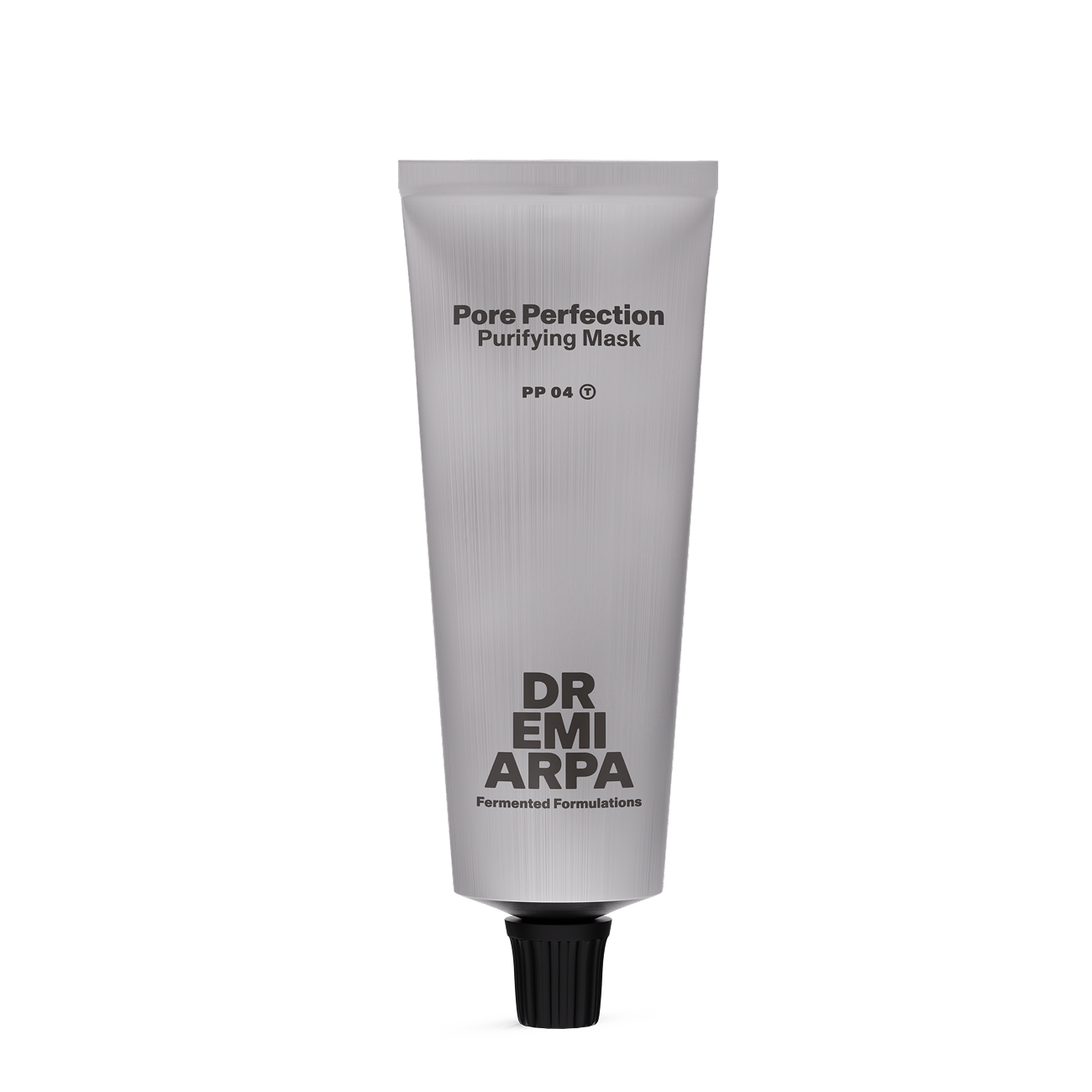
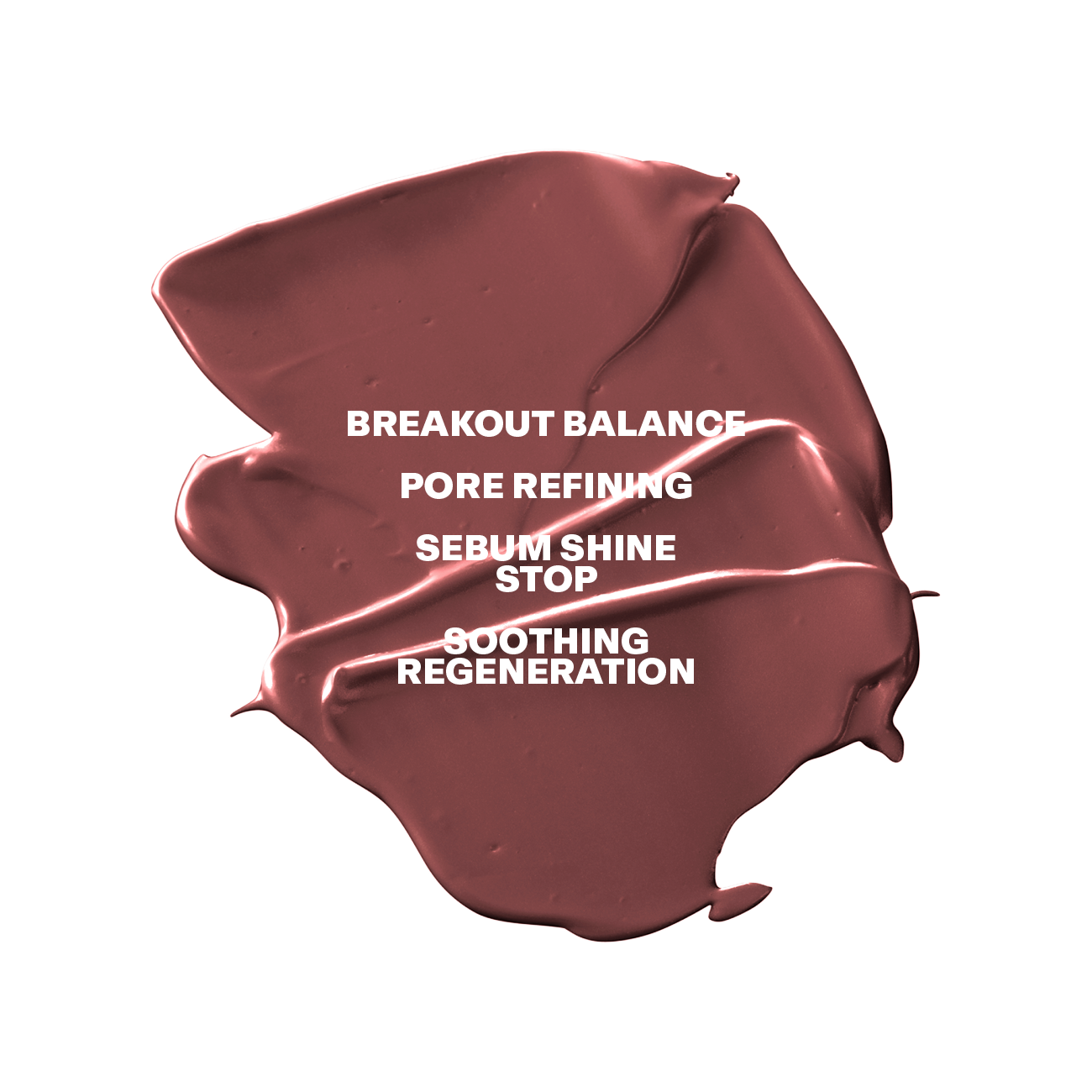

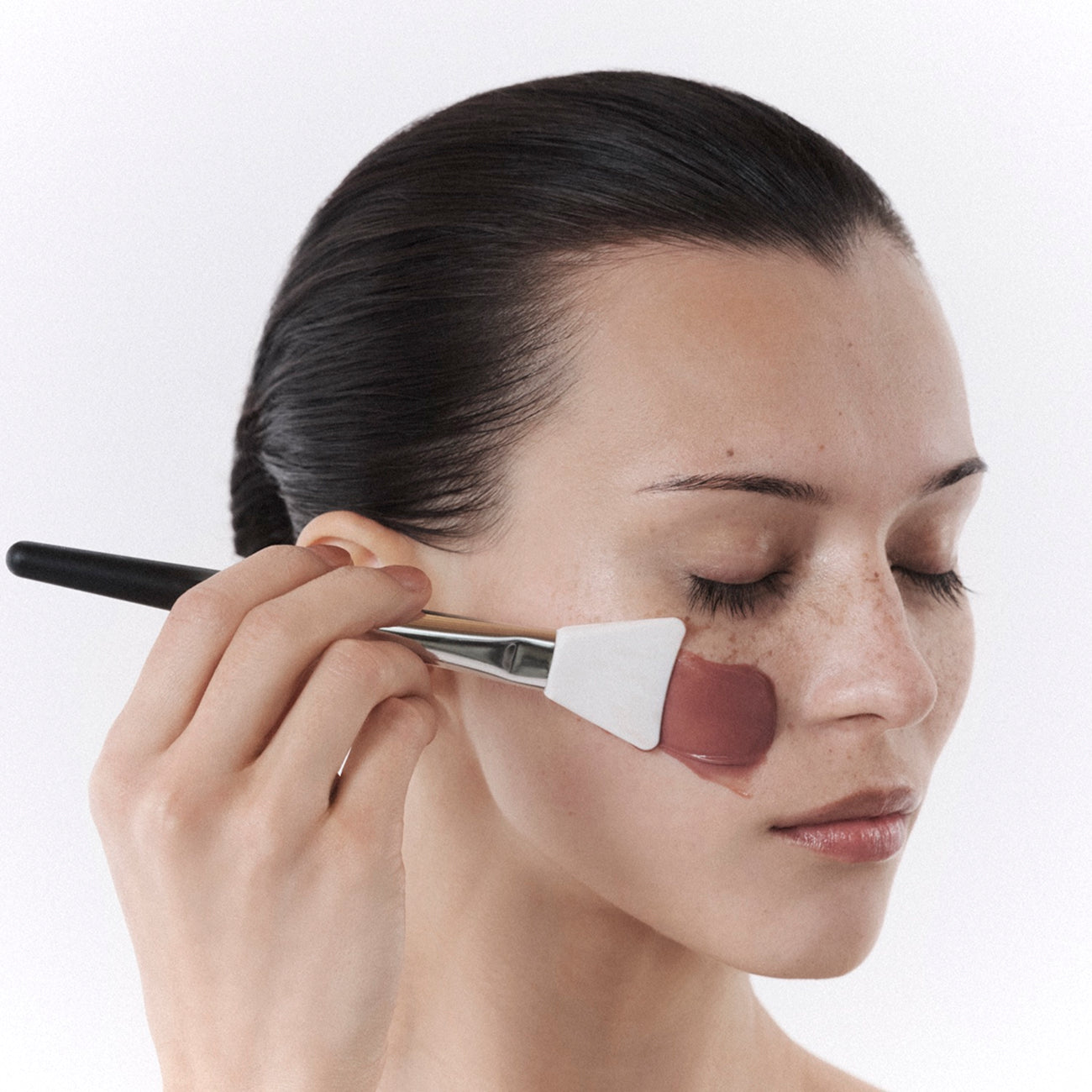
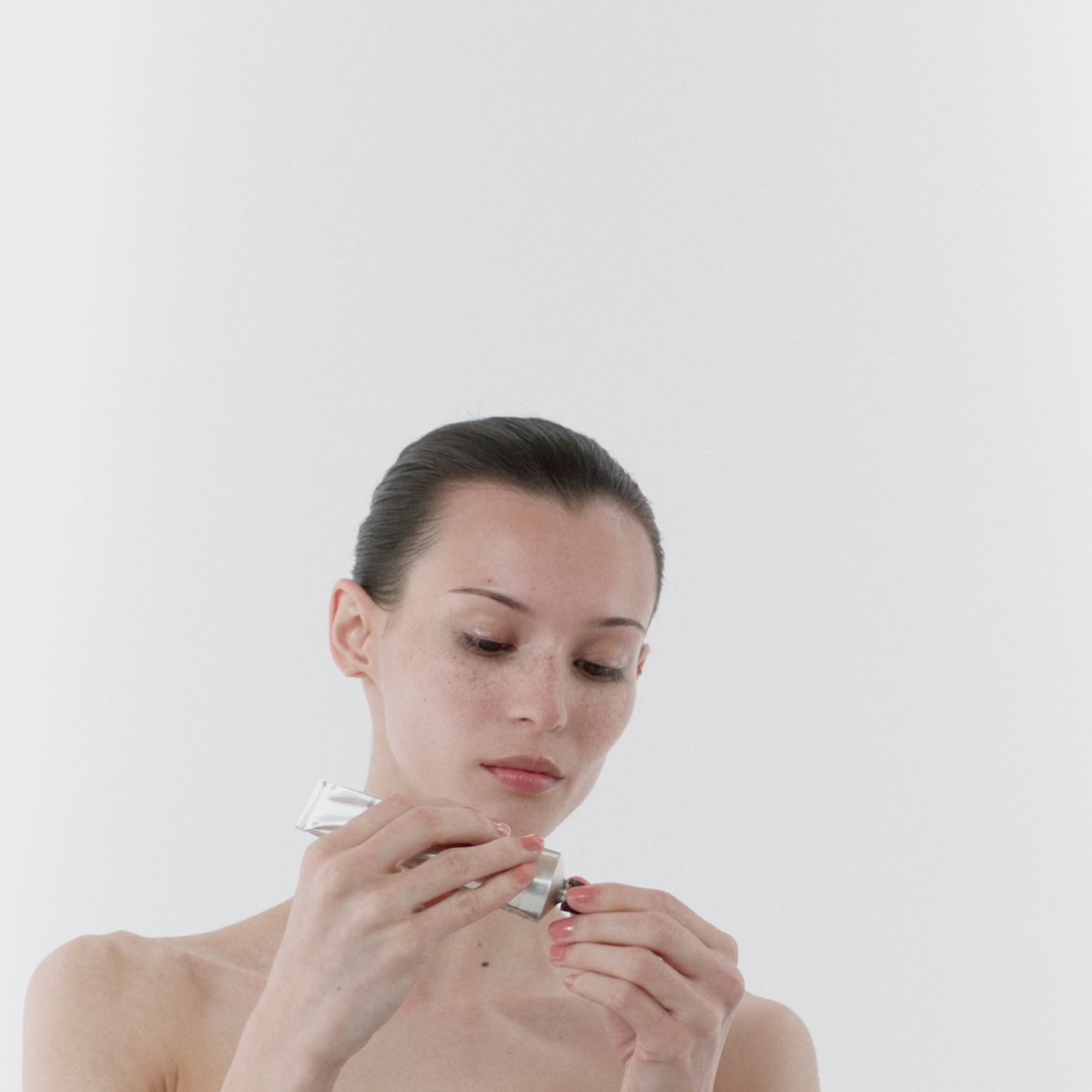

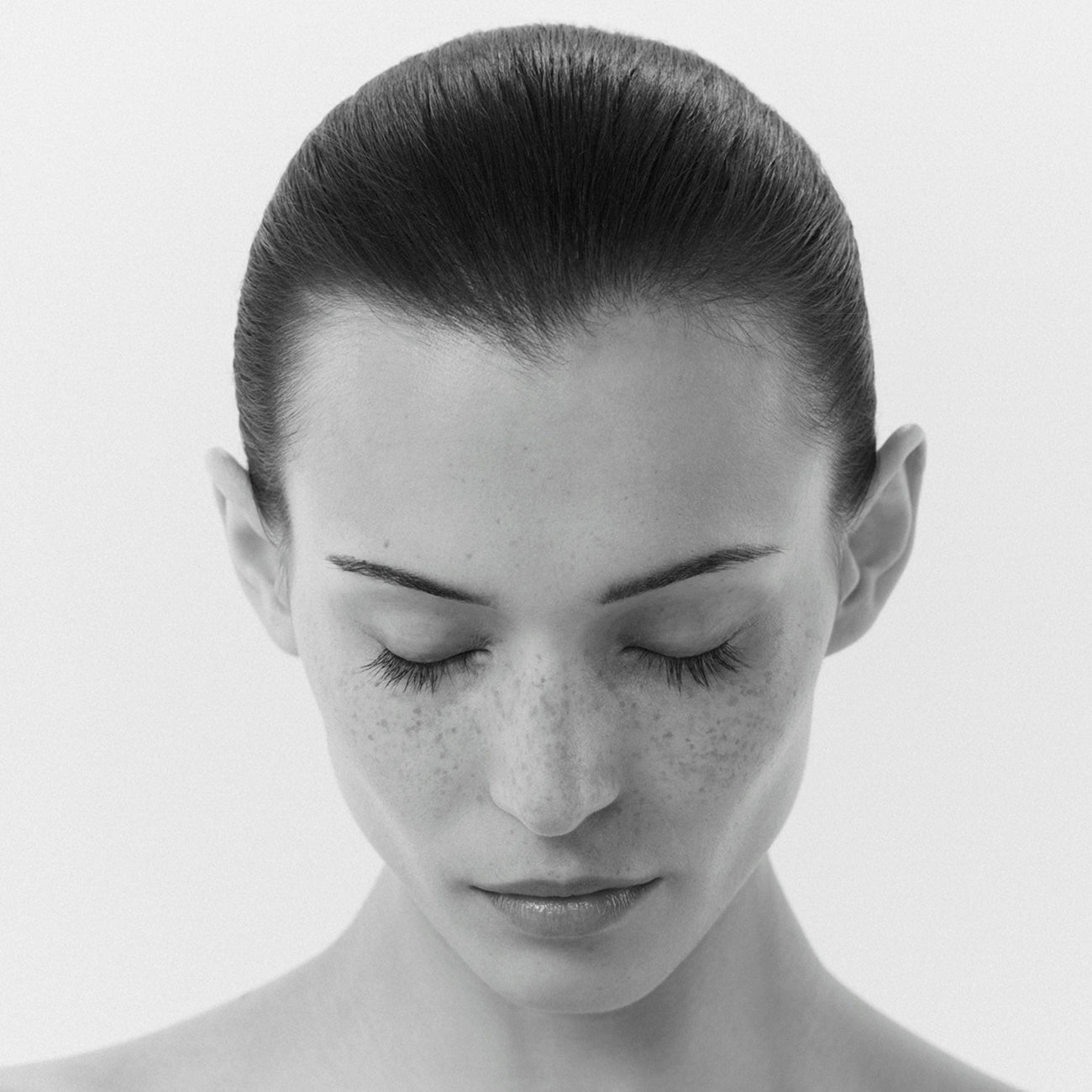
Purifying Mask
- 10 % pre- and postbiotics support the skin microbiome, have an anti-inflammatory and soothing effect.
- 10 % niacinamide helps to reduce impurities and hyperpigmentation and has a sebum-regulating effect.
- 2 % BHA refines the pores, regulates sebum production and has an anti-inflammatory effect.
- Kaolin has a sebum-absorbing effect.
- Allantoin promotes skin regeneration.
Prepare your pores for perfection!
Redness
Occasional redness can also occur with any skin type and can have many causes. Redness, a feeling of heat or sensitive reactions to skincare products are not automatically a sign of sensitive skin, but often an indication of a disturbed skin barrier or inflammatory processes. Soothing active ingredients - such as those contained in the Overnight Oats Calming Mask - can help with sensitive, reddened skin or skin prone to rosacea.
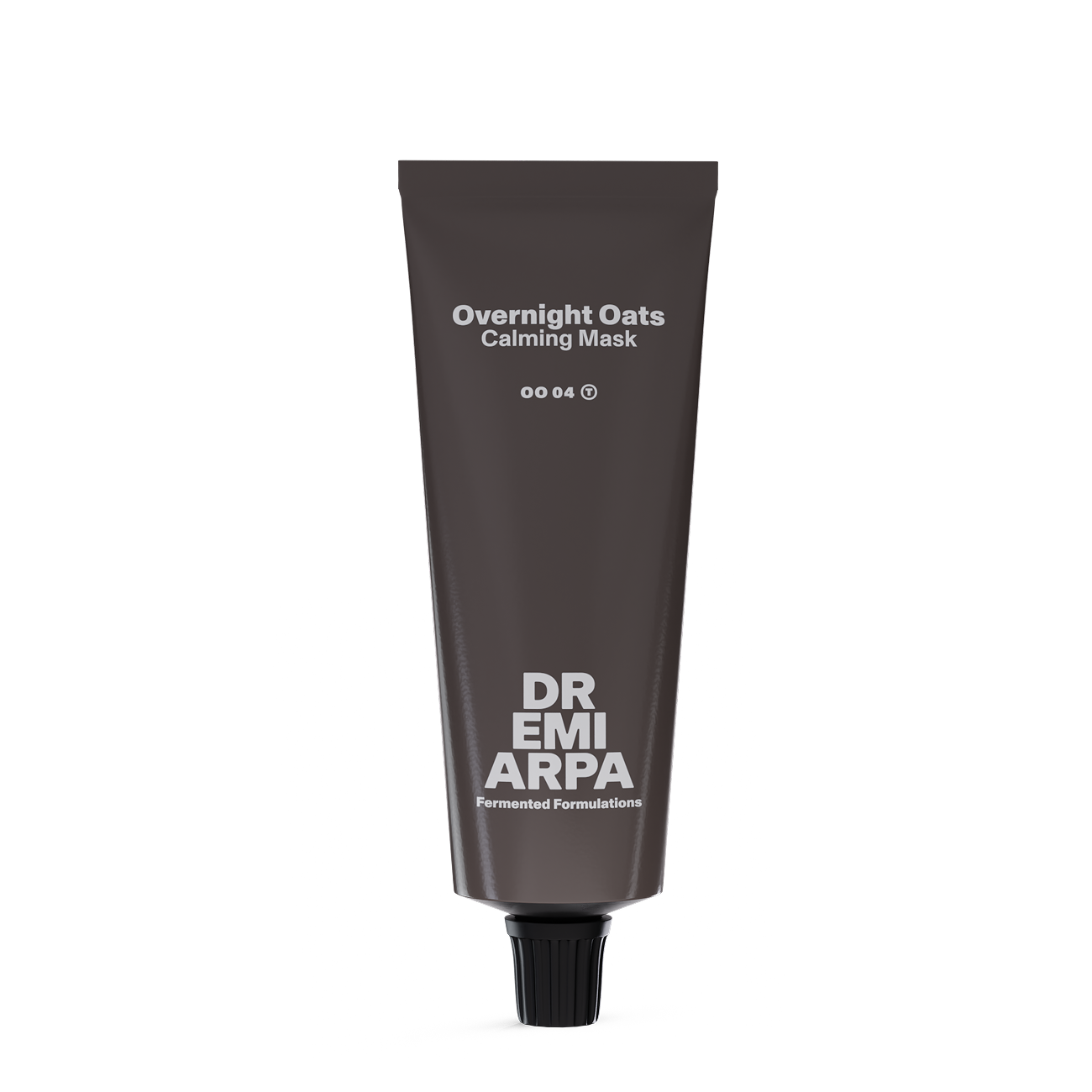


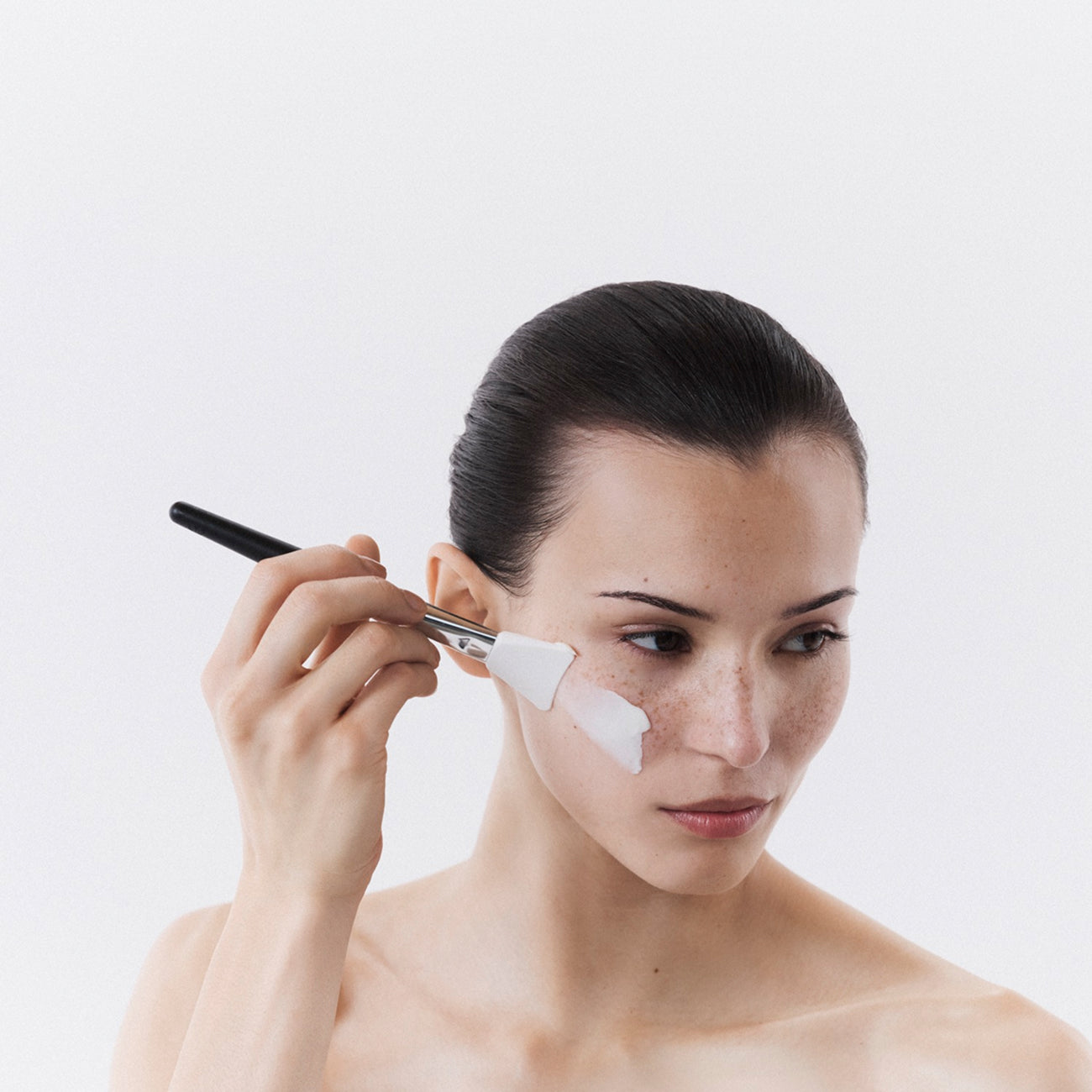
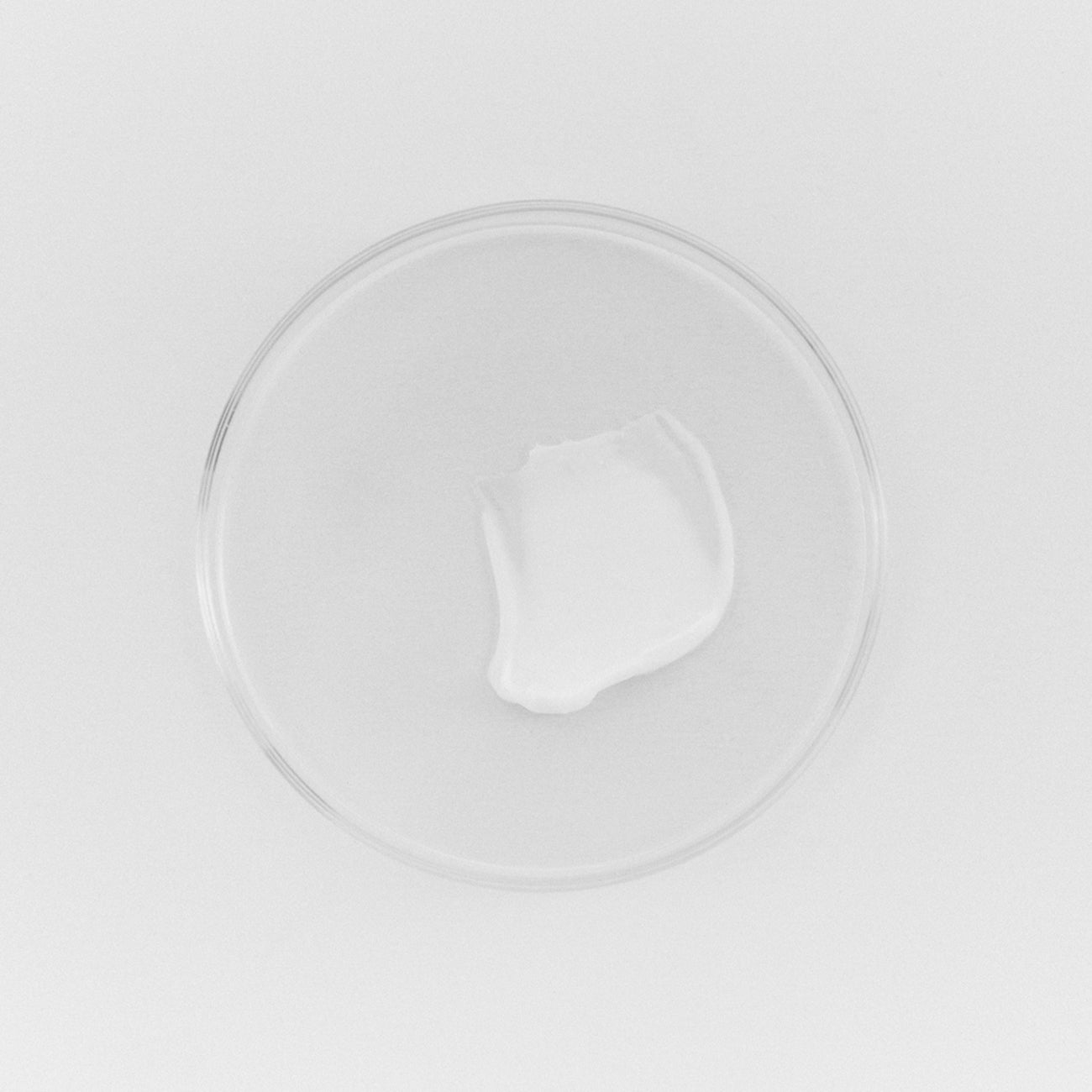
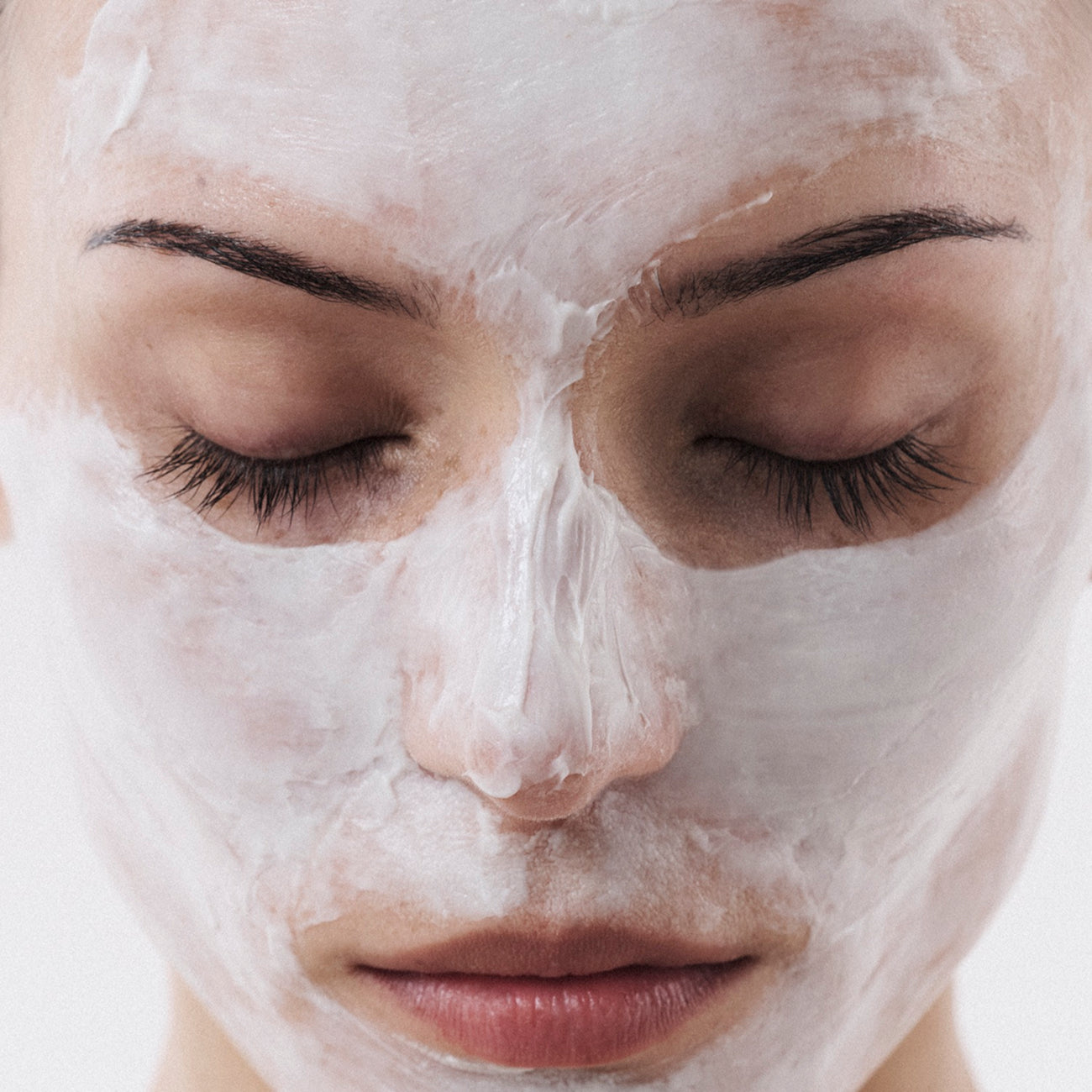
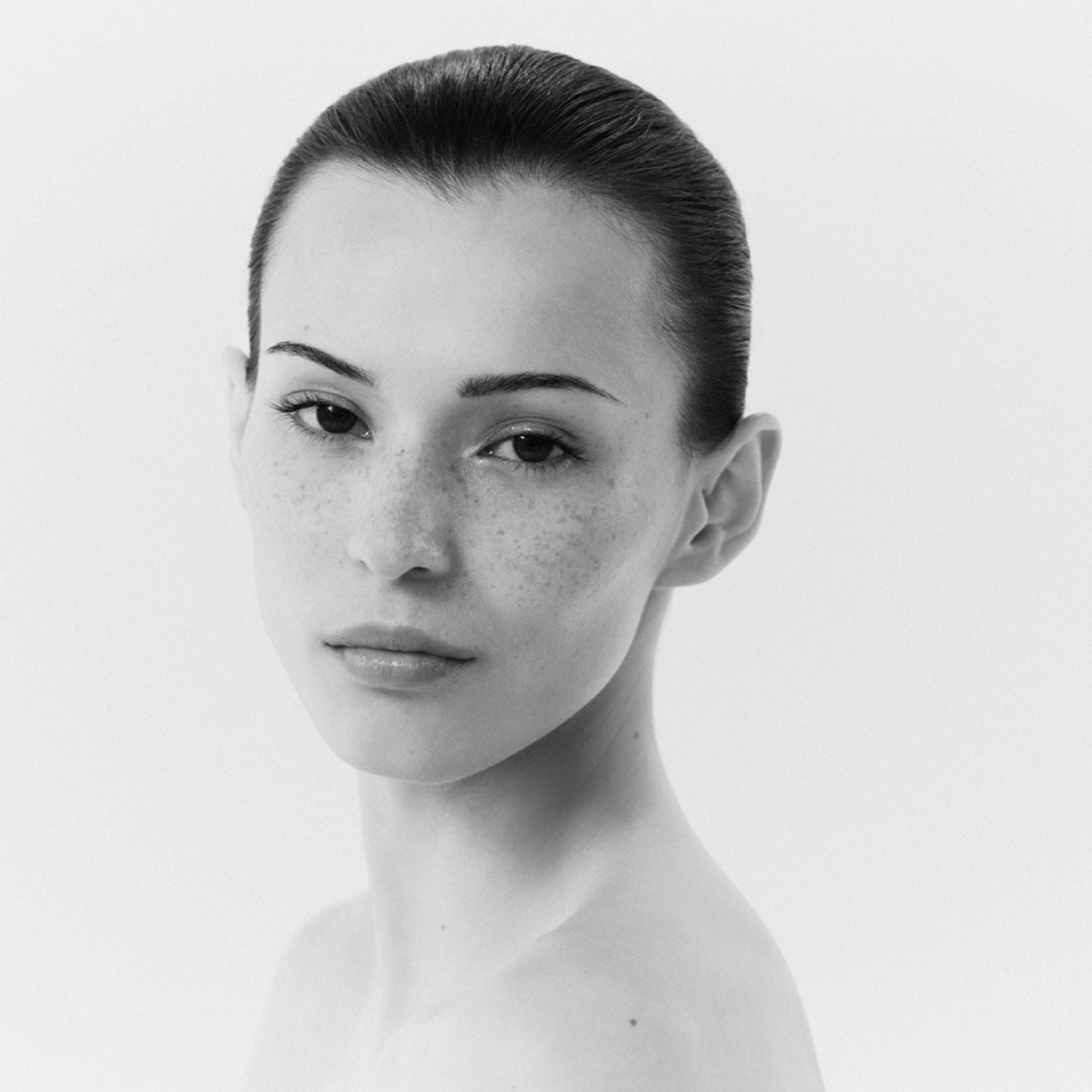
Calming Mask
- 10 % pre- and postbiotics support the skin microbiome, have an anti-inflammatory and soothing effect.
- 5-fold ceramide complex can reduce water loss and strengthen the skin barrier.
- Colloidal oats have a calming effect, can reduce water loss and reduce redness.
- Ectoin has a protective, soothing and moisturizing effect.
- Carnosine has an antioxidant effect and can promote collagen synthesis.
- Bisabolol has an anti-inflammatory and soothing effect.
Obsess over oats!
Pale complexion
Is your skin lacking glow? A tired, uneven complexion can have many causes: slowed cell turnover, environmental stress or even dehydrated skin. If you have rough, tired skin and a dull complex ion, you can regain your skin's natural radiance with the right routine - for a natural glow. A chemical exfoliator such as Active Acids is ideal for this, as is a hydrating toner after cleansing, which prepares your skin perfectly for subsequent care. The Essential Essence Skin Balancing Toner, for example, contains a special peptide that can have a slightly exfoliating effect when used daily.
Fine lines and wrinkles
Skin ageing affects all skin types - but it manifests itself individually. You can counteract fine lines and wrinkles, for example, by focusing on strengthening and regenerating the skin - in the spirit of longevity and well-ageing. Serums are ideal for this, for example the SeriousC Complex Antioxidant Serum inthe morning and - depending on age and previous experience - the AbsoluteA Retinal Serum orAbsoluteA+ Retinal Serum in the evening. They are applied after cleansing and before the moisturizer and can counteract the signs of skin ageing.
KEY TAKEAWAYS
Which facial care is right for me? Whether you have dry, oily, normal or combination skin - your skin type determines which skincare is best for you. A professional skin analysis by specialists such as beauticians can help if you want to find out your skin type. The wash test or blotting paper test is also a good choice as a quick method for at home to provide information about your own skin type. A skin test like this also helps you to recognize changes early on and adjust your routine accordingly. In any case, a combination of gentle cleansing, targeted care with suitable active ingredients and daily UV protection is important.
Your skin type is only part of your skin story. Skin conditions are dynamic - and your skincare routine can be too. If you understand your skin properly, you can provide it with targeted support instead of overburdening it.
FAQ
What skin type am I? A skin quiz can provide information about your skin type and condition. However, a simplified skin type test that you can carry out yourself can also help. For example, the wash test: cleanse your face with a mild cleanser, wait at least 30 minutes and observe how your skin feels and looks. There are also skin type tests online, for example the Skin Quiz at DR. EMI ARPA SKIN. However, taking a close look at your skin yourself is usually also informative:
- Is it tight or does it feel rough? Then you probably have dry skin.
- Is your whole face shiny? This indicates oily skin.
- Is only your T-zone (forehead, nose, chin) shiny, while your cheeks are rather dry? Or vice versa? Then you have combination skin.
- Don't you see any particular abnormalities? Then you have normal skin.
In addition to skin types, there are various skin conditions that can occur regardless of skin type. These include
- Impurities such as pimples or pustules
- Redness, which may indicate sensitive skin or skin irritation
- Tired, dull skin, which may be dehydrated, for example
- Fine lines and wrinkles, which are also favored by external factors such as environmental influences
A skin type is genetically determined and basically remains constant (e.g. dry, oily, normal, combination skin). A skin condition, on the other hand, can change more frequently due to external influences, seasons, diet or care products.
In cosmetics, a distinction is made between four basic skin types, which can be determined using a skin test on the face, among other things:
- Normal skin - balanced, fine-pored, rarely skin problems
- Dry skin - low sebum production, often feeling tight and flaking
- Oily skin - Excessive sebum production, prone to shine and blemishes
- Combination skin - combination of dry and oily skin areas
Proper skin care is based on correct skin type determination. Incorrect skin care can lead to skin problems, e.g:
- Excessively rich care for oily skin can increase impurities.
- Products that are too aggressive for dry skin can cause irritation and redness.
Targeted care with suitable active ingredients supports skin health and protects against premature skin ageing, while a professional skin analysis or simple tests such as the wash test help to identify your own skin type and find the ideal care.
Alvarez GV, Kang BY, Richmond AM, Hoss E, Sulewski R, Minkis K, Rozenberg SS, Antonovich D, Boucher A, Bernstein EF, Bertucci V, Chapas AM, Cohen JL, Council ML, Dover JS, Geronemus R, Given KM, Goldbach HS, Goldman MP, Hooper D, Kaufman J, Munavalli G, Pacheco TR, Rossi AM, Wilson S, Alam M. (2025). Skincare Ingredients Recommended by Cosmetic Dermatologists: A Delphi Consensus Study. J Am Acad Dermatol.
Baumann, L. (2008). Understanding and treating various skin types: the Baumann Skin Type Indicator. Dermatologic Clinics, 26(3), 359-373.
Battie C, Jitsukawa S, Bernerd F, Del Bino S, Marionnet C, Verschoore M. New insights in photoaging, UVA induced damage and skin types. Exp Dermatol. 2014 Oct;23 Suppl 1:7-12.
Blume-Peytavi U, Lavender T, Jenerowicz D, Ryumina I, Stalder JF, Torrelo A, Cork MJ. (2016). Recommendations from a European Roundtable Meeting on Best Practice Healthy Infant Skin Care. Pediatr Dermatol. 2016 May, 33(3), 311-21.
Kerscher, M. (2009). Hypersensitive skin. In: Dermatocosmetics. Darmstadt: Steinkopff.
Neubert, R. H. H., Wohlrab, W. A., & Marsch, W. A. (2001). Dermatopharmacy. Stuttgart: Wissenschaftliche Verlagsgesellschaft.
Roberts, W. E. (2009). Skin type classification systems old and new. Dermatologic Clinics, 27(4), 529-533.
Trommer H, Neubert RH. Overcoming the stratum corneum: the modulation of skin penetration. A review. Skin Pharmacol Physiol. 2006;19(2):106-21.


























